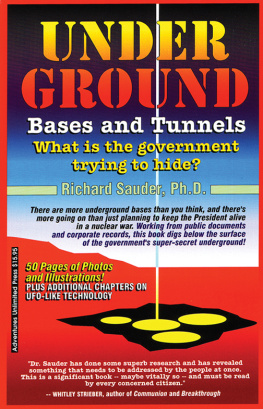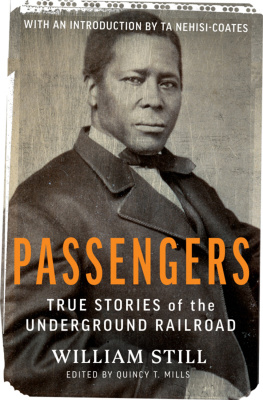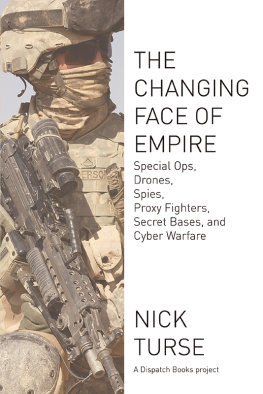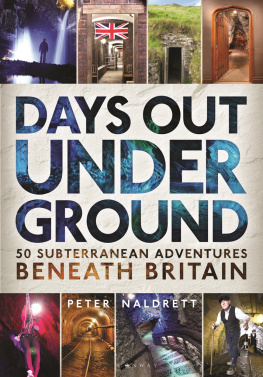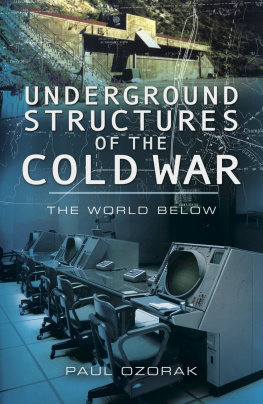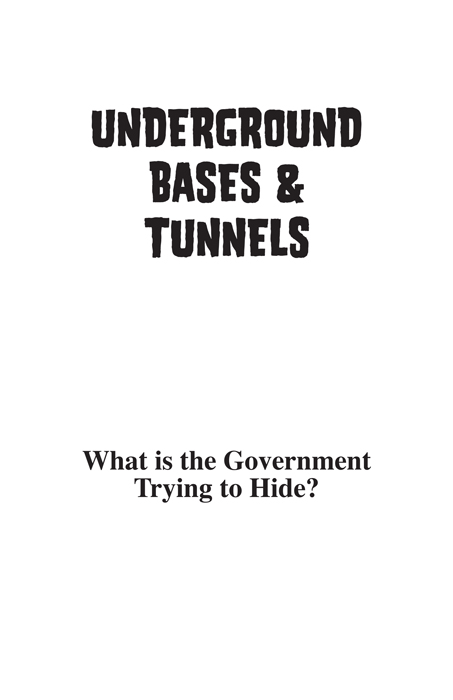Other books from Adventures Unlimited Press
The Mystery of the Olmecs
Technology of the Gods
Pirates & the Lost Templar Fleet
Lost Continents & the Hollow Earth
Lost Cities & Ancient Mysteries of the Southwest
Lost Cities of China, Central Asia & India
Lost Ciies & Ancient Mysteries of Africa & Arablia
Lost Ciies & Ancient Mysteries of South America
Lost Ciies of Ancient Lemuria & the Pacific
Lost Ciies of North and Central America
Lost Cities of Atlantis, Ancient Europe & the Mediterranean
Atlantis & the Power System of the Gods
Underwater Bases and Tunnels
Kundalinii Tales
Underground Bases and Tunnels
ISBN 978-1-939149-26-8
Copyright 1995, 2014
by Richard Sauder, PhD
All Rights Reserved.
Published by Adventures Unlimited Press
One Adventure Place
Kempton, Illinois 60946 USA
www.adventuresunlimitedpress.com
Foreword
A C AUTIONARY N OTE TO UFO B UFFS
Persistent rumors of secret underground bases and deep underground tunnel systems have swirled through the field of UFOlogy for some years now.
These underground installations are variously said to be constructed, staffed and operated by covert human agencies (either part of the military-industrial complex or various federal government agencies), or by extraterrestrial or alien beings (the so-called Little Greys often mentioned in the UFO literature), or by both covert human agencies and aliens working together in secret, underground installations.
I will say at the outset that my research has not revealed whether or not Little Greys even exist, much less whether or not they are living and working in underground installations. Perhaps the Little Greys really do exist; perhaps they do not. But since I cannot definitively answer the question one way or the other, I will not deal with it to any great degree in this report. Neither will I discuss reported cases where abductees have been taken into purported underground installations, where they have allegedly seen and experienced many strange things, including bizarre medical procedures and biological engineering experiments. Though I have both heard and read such stories I cannot testify as to the veracity of these reports, so I will not concentrate on them here. These anecdotal accounts are interesting, however, and I am keeping an open mind about them.
What I do know for certain is that there are many underground installations here in the United States.
I also know that the military-industrial complex and various federal government agencies have constructed, and are working in, many of these installations.
I also know that throughout virtually the entire post-WW II period (and perhaps before) the United States government has been actively planning and constructing underground facilities and installations, some of which are very deep underground, quite sophisticated and capable of accomodating large numbers of people. I have documented quite a number of these facilities and will describe them, to the extent that I am able, in this book. I have also been told of many other underground facilities that I am presently not able to document. For that reason, most of them will not be discussed here.
I have been able to find considerably less information about the much-rumored tunnel system said, by some reports, to crisscross the United States. This does not mean that it does not exist. It may simply be that its deep underground location (if it really exists) gives it a natural cover that is hard to break. Or maybe it really does not exist! I dont know for sure one way or the other. Whatever the case, I will present what information I have uncovered about tunneling technology and tunnel systems the kind of information that may well form the popular basis for the rumored underground tunnel system.
My approach to the tunneling and tunnel network issue is the same as to the underground base question: I will present for my readers reports, information and facts that I have discovered and leave them to draw their own conclusions. I trust that most of what follows will be as new and intriguing for others to read as it was for me to discover.
I understand that some readers may object to the publication of information about military facilities. However, it is my feeling that the aims and ideals of representative democracy are poorly served by secrecy in government, especially in the policies of the armed services.
History teaches us that when a country has an exceptionally powerful military, and when that military carries out secret policies and agendas like the U.S. military does (think of the illegal Iran-Contra affair, of super-secret nuclear bomb testing in Nevada, of the astronomical amounts of money given to the Pentagon every year for so-called black projects), then there is an ever present danger of that military taking control of the government. That control could be taken quickly or gradually. Noisily or quietly. But dictatorships are born when power is usurped by the military. God forbid that a military dictatorship should ever march under the stars and stripes of the United States of America. Protection against that ever happening begins with the exercise of our First Amendment right to speak freely.
So, in that spirit, and in the hope that some of what follows will help peel away the cover of excessive secrecy that shields too much of what the Pentagon does from public scrutiny, I offer solid documentation of underground military installations, as well as official plans and documents pertaining to the construction, operation and planning for such installations.
I would like to briefly relate an unpleasant incident involving the U.S. Army Corps of Engineers. In December 1992, while researching this book, I filed a Freedom of Information Act Request with the U.S. Army Corps of Engineers. My request sought information about the Corps involvement in underground base and tunnel construction and maintenance. As it happens, I was at that time a PhD candidate in political science working on my doctoral dissertation. After getting no substantive response to my request, I called the Pentagon and was referred to the Army Corps Freedom of Information Office. I subsequently called that office and complained about the Corps noncompliance with my request. A few days later an attorney for the Army Corps of Engineers called my dissertation advisor to complain about me. He informed my dissertation advisor that if I wanted to get bureaucratic that he would show me what bureaucratic was!
Subsequently I received a letter from the Corps denying my request for a fee waiver and stating that I would have to pay all fees related to searching for and providing documentation on their subterranean construction and maintenance activities. Needless to say, this could easily have run to thousands of dollars.
As a result, that information is not in this report. However, I still found plenty of other information relating to the U.S. Army Corps underground construction activities and it is all discussed in detail in the pages that follow. So the Armys attempt at suppressing my First Amendment rights was not entirely successful. The free press lives!

